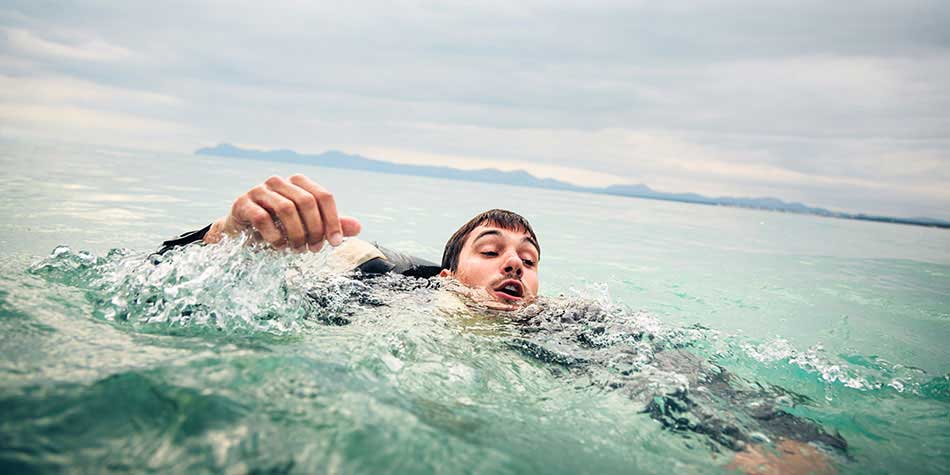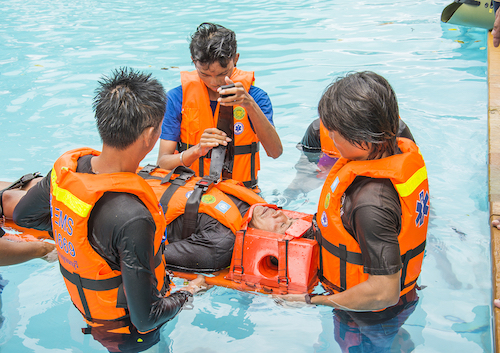Submersion
Published .

A drowning occurs when the patient’s airway is surrounded by a liquid that prevents them from breathing air; depending on a variety of factors, a drowning may not be lethal. Non lethal drownings are referred to as near drownings.
A variety of conditions can lead to a drowning or near drowning. The patient’s physical conditioning, hydration, swimming ability, and ambient temperature can all play a role. Diving accidents can lead to cervical spine fractures if the patient dives in head first and hits the bottom. For this reason, diving accidents require manual stabilization of the cervical spine.
Another condition related to drowning is a ‘parking lot’ or secondary drowning. In secondary drowning, the patient develops pulmonary edema hours after the rescue is over. They were called parking lot drownings because these patients were often found dead in the parking lot of the beach they experienced the near drowning.
Assessment and management of submersion

In the case of submersion, the patient will need to be rescued before they are evaluated by the ambulance crew. It can be very dangerous to rescue a near drowning patient. Rescuers should use the following guidelines when rescuing near drowning patients:
- Reach – Reach out with a pole and drag the patient to the shore from dry land
- Throw – Throw a life saver attached to a rope and drag the patient to the shore from dry land
- Row – Row to the patient or otherwise use a boat to reach the patient and rescue the patient from the water
- Go – If trained, a rescuer can swim to the patient. Only rescuers trained in water rescue should attempt a swim rescue
Initial management should be guided by the primary survey. Given that the patient nearly drowned, high flow oxygen administration is indicated. Unresponsive patients will surely require positive pressure ventilation. When ventilating, be sure to monitor the airway for secretions. Near drowning patients may produced large amounts of secretions that will require suctioning. It is important to consider the possibility of a cervical spine fracture. If the patient dove into the water, it is possible for the patient to break their neck. Moving the patient from from the water to the ambulance could exacerbate the cervical spine fracture, therefore immobilizing the cervical spine before the patient is moved from the water is important. If there is no risk to the patient’s cervical spine, the patient would best be positioned in the left lateral recumbent (or recovery position) in the event of vomiting.
Other signs and symptoms associated with near drowning are:
- Coughing
- Vomiting
- Difficulty breathing
- Respiratory arrest
- Cardiac arrest
